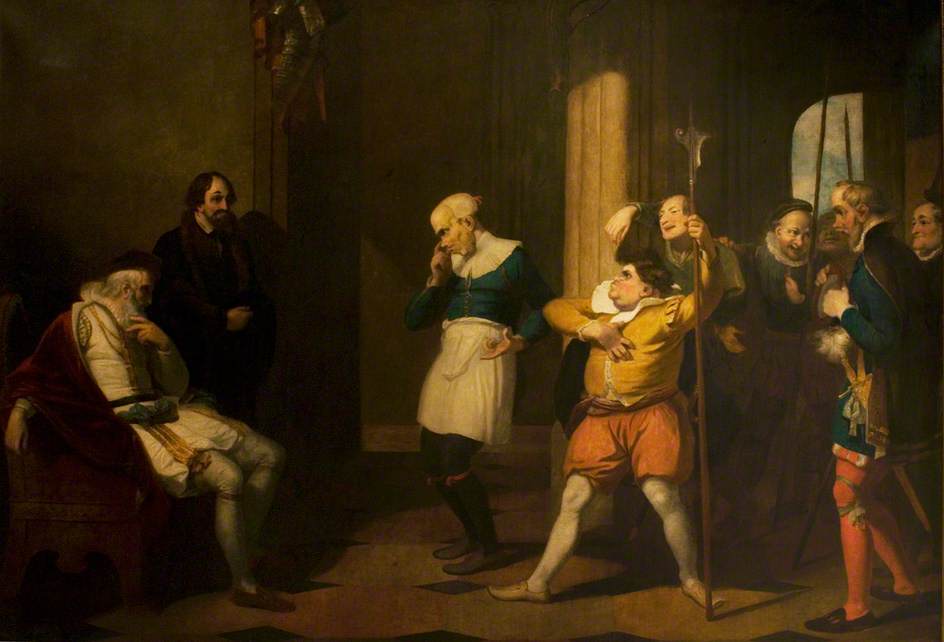Foucault claims you can see that in the development of statistics. You can see it in things like birth and death rates, the health of the population, crop yields – these kinds of questions. He thinks that population then becomes the focus of politics. Foucault thinks that territory was much more of a focus of politics in the medieval period, but this has been supplanted by this interest of government over population in a more modern period.
Foucault, Shakespeare and the question of territory
Professor of Political Theory and Geography
- Foucault makes the claim that in the 17th century there is a shift from the object of government being over territory to government becoming the population.
- What I suggest, however, is that the modern notion of territory is produced around the same time as the modern notion of population.
- Shakespeare offers a lot of material that can help us to think about questions regarding economic, political and legal aspects of territory.
“Historically misleading”
When I was doing my work on the history of the concept and practice of territory, I was very influenced by the way that Foucault had done some of his historical work. I was interested in exploring the relation between a word, a concept and a practice of territory. Foucault, along with some other thinkers, was really powerful for me in terms of how we might do a history of a concept through these different times, these different places.
I could never have written The Birth of Territory without having done the work on Foucault and being inspired by the approach that he suggests. And yet, in that book, I suggest that almost everything that Foucault says about the question of territory is, at best, historically misleading.
Foucault: territory and population
Foucault makes the claim, in some of his lecture courses, that what we’ve seen around the 17th century is a shift from a concentration of the object of government being over territory to the object of government becoming the population. Foucault suggests that you can see this in a whole range of ways in which the population becomes the object, the thing to which governmental practices are directed.

Photo by Varavin88.
Co-produced at the same time
What I suggest in my work is that the modern notion of territory is produced around the same time as the modern notion of population. It is produced through many of the same kinds of techniques that Foucault identifies in relation to population: statistics and distribution of population, its distribution of population through a territory. The surveying, the mapping, the marking out of boundaries of States – this only becomes possible with developments in mathematics, particularly in coordinate geometry in the 17th century. They are the same kinds of things that Foucault thinks are central to the advent of population.
On my reading, territory and population are co-produced around the same time with the same kinds of techniques. This is why I think that some of the things that Foucault says about territory in the historical period he thinks that we’ve gone beyond, are misleading. He characterises certain thinkers as having a focus on territory. On my reading, those thinkers are not particularly focused on the question of territory, at least not in the way that we understand it today.
Then, Foucault suggests that some later thinkers do have a focus on population, but not on territory, whereas they may actually be exploring it too. So, in some ways, the question of territory actually appears later than Foucault thinks it’s displaced. The modern notion of territory, as I read it, is really a late 17th, early 18th century notion, parallel to perhaps the way that Foucault understands the question of population.
Shakespearean Territories
The most recent book I’ve written on territory is called Shakespearean Territories. In that book, I try to use different plays by Shakespeare to explore many different aspects of the question of territory. In previous work, I’ve suggested that rather than looking for a single definition of territory, we need to look at the different registers, at the different types of questions that we need to ask in order to understand how territory is being understood and practised in different times and different places. We need to look at political, economic questions; property; land. We need to look at political, strategic questions. Who controls land? What military force is going on there? We need to look at legal questions. What is the question of sovereignty or jurisdiction in relation to territory? What are the techniques that are used: surveying, cartography, census, statistics and so on?
Shakespeare offers a lot of material that can help us to think about those kinds of questions. One of the ways that we can understand Richard II, for example, is that it is a play about the control not just of the territory but also of the land. Richard is accused of being a landlord of England rather than King. Shakespeare says the land is ‘now leased out... like to a tenement or a pelting farm’. Richard is accused of treating England as if it is a private dominion of himself rather than the land of the kingdom of which he is supposed to be the head.
Exploring legal and colonial questions
Legal questions of territory come up in Henry V. In the opening scenes of the play, the Archbishop of Canterbury and the Bishop of Ely are trying to deflect Henry from taking the lands of the Church and instead trying to get him to take the lands of France. They use the Salic law as a basis for which Henry might be able to make a legitimate claim to the crown and to the lands of France.

Smirke, Robert; Measure for Measure, Act II, Scene 1. Royal Shakespeare Company. Wikimedia Commons. Public Domain.
Shakespeare explores a number of things about technique in his plays in terms of cartography, land surveying and the census. There’s a surveyor in one of his plays; in Measure for Measure, he’s interested in the kind of political calculation and political technique. In The Merchant of Venice, he’s interested in weighing, counting, measuring in different ways.
I also use Shakespeare to try and push me beyond some of the ways I thought about territory in previous work, to think more seriously about the question of the colonial, not simply in terms of The Tempest, which is the obvious colonial play, but also his plays set in the eastern Mediterranean – Othello and Pericles, for example – and Antony and Cleopatra, in a much more historical past.
The geophysical in Shakespeare’s plays
I look at the way that bodies and territories are interrelated, and for that I look particularly at the play Coriolanus. I try to use Shakespeare also to think about the geophysical. There’s a great scene in Henry IV, Part I where three conspirators against Henry IV are dividing up the kingdom. They haven’t yet defeated Henry in battle, but they’re using rivers as the markers on a map of the landscape to say, this area, largely of Wales, will be owned by Owen Glendower, and they use the River Severn and the River Trent as the boundary lines. But then Hotspur, the figure from the north, says that he doesn’t think that the area he’s been given is fair because the Trent doesn’t flow in the right direction: ‘See how this river comes me cranking in. And cuts me from the best of all my land.’ His proposal is actually not that they draw a different line on the map or that they choose a different river, but actually that they change the course of the river in order to make a more equitable territorial distribution between these three people.
I use this as an example of the geophysical in Shakespeare’s plays – a different way of thinking about the question of territory. Shakespeare perhaps didn’t intend to do this, but he is actually a very powerful theorist of territory. He opens up such a range of different questions and different registers that we can understand territory in the time in which he sets many of his plays. Shakespeare also opens up ways in which we can think about the question of territory at the moment.
Why does territory matter today?
Territory continues to matter today in a range of ways. It dictates who you can vote for and which elections you’re able to vote in; it dictates who you pay your taxes to; it dictates whether you have the right kind of passport that allows you to move across borders elsewhere in the world. Territory also shows in national allegiance: which flag, which football team you might support.
Territory matters. It continues to matter. Even in a so-called “globalised world”, territory is still something that marks out a whole set of rights. People might have rights on one side of a river that are different to the rights that you might have if you have citizenship on the other side of the river. We still use those territorial divisions to shape many of the ways in which contemporary politics and life is practiced.
Territory and the pandemic
In some ways, we’ve seen that even more starkly in the era of the COVID-19 pandemic, in that one of the ways that States have taken to control and protect the health of their population has been to close borders. It’s been most stark with, for example, Australia and New Zealand. It’s been less stark in the United Kingdom, where the borders have remained fairly porous in terms of movement of people.

Photo by Volurol.
Even borders that have been unmarked on the landscape for generations, have, in the COVID era, been controlled and regulated. So, border markers between France and Switzerland have often appeared in the middle of fields, in the middle of footpaths, in the middle of cycle paths: places that people didn’t regularly notice as borders. The territory of Switzerland and the territory of France have been marked out in ever-stricter ways because of this pandemic, but this is often having to be dealt with by nation state governments.
Discover more about
Foucault, Shakespeare and territory
Elden, S. (2018). Shakespearean Territories. The University of Chicago Press.
Elden, S., & Crampton, J. W. (2007). Space, Knowledge and Power: Foucault and Geography. Routledge.
Elden, S. (2013). The Birth of Territory. The University of Chicago Press.
Centre Michel Foucault, Caphés (UAR 3610) and Bibliothèque nationale de France (2025). Foucault: The Inventory of the Library of Michel Foucault and Daniel Defert.